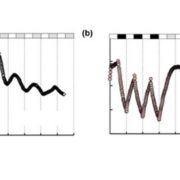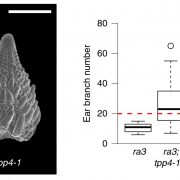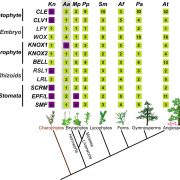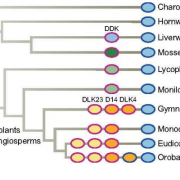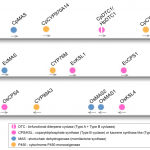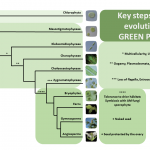Multiple metabolic innovations and losses are associated with major transitions in land plant evolution (Curr. Biol.)
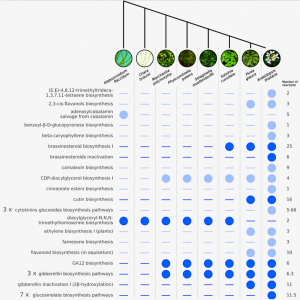 The colonization of land by a single streptophyte algae lineage around 450 million years ago culminated in the evolution and radiation of all terrestrial flora, the embryophytes. Adapting and thriving in the land environment required many morphological and physiological innovations, as well as the acquisition of novel metabolic pathways. However, metabolic pathway knowledge is biased towards angiosperm models. Cannell et al. explored metabolic gains or losses from streptophyte algae to angiosperms using a computational comparative approach: genome-scale metabolic pathway databases for eight representative species of major plant lineages were analyzed, supplemented by 64 and 305 additional plant genomes and transcriptomes. The analyses revealed that the complete repertoire for brassinosteroid biosynthesis/inactivation evolved in a stepwise fashion and is only fully present in seed plants, whereas most genes for gibberellin biosynthesis/inactivation are present in all land plants lineages, even in bryophytes, where gibberellins haven’t been experimentally detected. Moreover, the authors found that enzymes required for suberin and cutin production are found in angiosperms, while genes required for sporopollenin biosynthesis are conserved in all land plants. This paper identifies metabolic evolutionary trends across the plant phylogeny and opens a new research venue: the study of plant metabolism in extant non-angiosperm models. (Summary by Jesus Leon @jesussaur) Curr. Biol. 10.1016/j.cub.2020.02.086
The colonization of land by a single streptophyte algae lineage around 450 million years ago culminated in the evolution and radiation of all terrestrial flora, the embryophytes. Adapting and thriving in the land environment required many morphological and physiological innovations, as well as the acquisition of novel metabolic pathways. However, metabolic pathway knowledge is biased towards angiosperm models. Cannell et al. explored metabolic gains or losses from streptophyte algae to angiosperms using a computational comparative approach: genome-scale metabolic pathway databases for eight representative species of major plant lineages were analyzed, supplemented by 64 and 305 additional plant genomes and transcriptomes. The analyses revealed that the complete repertoire for brassinosteroid biosynthesis/inactivation evolved in a stepwise fashion and is only fully present in seed plants, whereas most genes for gibberellin biosynthesis/inactivation are present in all land plants lineages, even in bryophytes, where gibberellins haven’t been experimentally detected. Moreover, the authors found that enzymes required for suberin and cutin production are found in angiosperms, while genes required for sporopollenin biosynthesis are conserved in all land plants. This paper identifies metabolic evolutionary trends across the plant phylogeny and opens a new research venue: the study of plant metabolism in extant non-angiosperm models. (Summary by Jesus Leon @jesussaur) Curr. Biol. 10.1016/j.cub.2020.02.086


